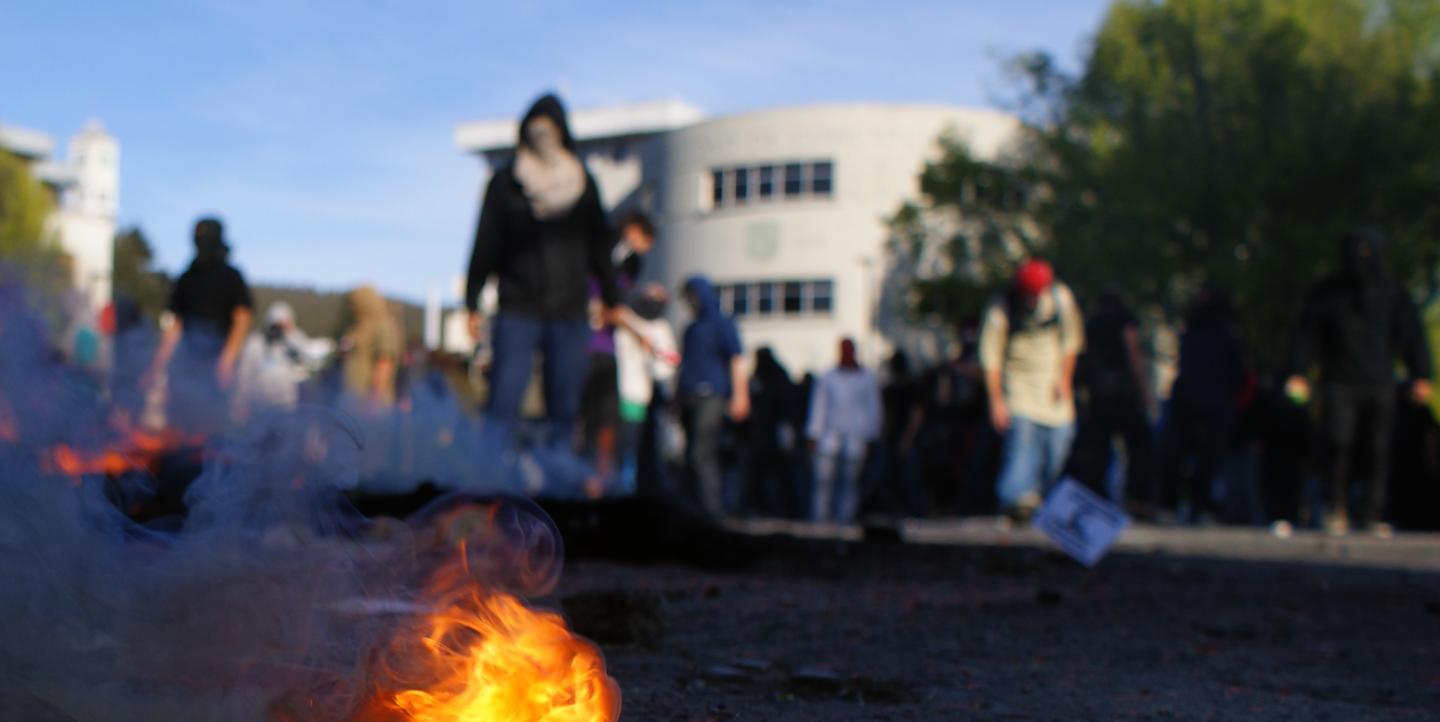There are plenty of articles offering guidelines for covering protests as a photojournalist. Don’t go off alone, wear protective gear, carry important contact details and be polite and calm with police are some of the common tips we now know and still need to revise.
However, there are very few articles that have looked into how photojournalists can follow up on protests once they’ve ended. Just like newswriters follow up on big stories in an effort to explore an event’s causes, effects and consequences, photojournalists can do the same after covering protests.
Zinyange Auntony and Jekesai Njikizana, freelance photojournalists for Agence France-Presse (AFP) in Zimbabwe, shared tips they have used in their careers to follow up on protests:
Return to the protest scene
“After the recent #Zimshutdown protest in Makokoba [Zimbabwe], I went back to the protest scene the next morning. I used the same route l had used the previous day,” said Auntony.
In most cases, stones and barricades used during the protests would most probably be still laying around. Well-thought-out pictures of the aftermath can show the impact that a protest had. This becomes particularly relevant for an audience that is familiar with the scene’s original state.
Talk to people
Njikizana noted that talking to people — be it observers, protestors or the community representatives who were affected the most — can lead to capturing more newsworthy issues that you might have missed during the action.
“You really have to talk to the people, if you don’t talk to them you will never know what happened,” Njikizana said. “From there, you can decide if something is newsworthy or if it’s not newsworthy.”
Talk to victims of police brutality
While one can take pictures of police brutality during a protest, the seriousness or severity of the brutality can be more evident after the protests. For example, Auntony once took a photo of a man who has visible inflammation days after he was assaulted by anti-riot police. Thus, a picture of a man nursing swollen wounds days after a protests can communicate an equally a strong message as that of a man being beaten up by police. In some cases, the former may actually prove to be stronger than the latter.
Capturing reactions
It’s also possible to capture people’s reactions after protests. This could range from people’s reactions while reading the morning paper to a shop owner reacting at the extent of looting that occurred in his shop.
Auntony also noted that for documentary photography, one could prompt or initiate action as part of a follow up. However, photographers should never stage any shots for the sake of a story.
“I have a picture of people watching other people being beaten up by police on a tablet,” he said. “l used a video that l had taken during the beatings and asked them to watch it so that l could get the shot.”
Working on documentary photography projects that revisit the experiences can also be a great way to follow up a protest.
Talking to the police
In most cases, police have reports of damaged goods as well as the number of protesters arrested. Such information becomes very useful in picture captions. Such follow-up details would also become useful in pictures taken during the protests. In some cases, police officers may die or get seriously injured during protests. Depending on its newsworthiness, a photojournalist may decide to follow up on that in the form of documentary work. However, information from police is at times doctored.
“Most police won’t give you any information,” said Auntony. “They will probably give you official statements. You will need something from the police, but they will probably hide some sensitive information from you.”
Rehabilitation process
Due to the trauma residents may experience, human rights organizations and churches tend to have rehabilitation programs that help ordinary people recover from their experiences. Looking at how people are recovering from protest-related trauma can be a great follow up, particularly when working on a documentary project.
This also includes the repairing of damaged properties. During violent protests, goods and property tend to be destroyed. A follow-up photo essay on how a shop that was supplying the whole suburb is trying to repair damaged property and recover lost goods may be relevant for a local newspaper, for example.
Main image CC-licensed by Flickr via Sin.fronteras.

